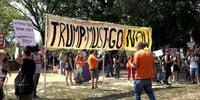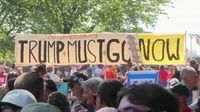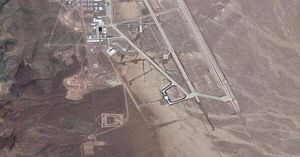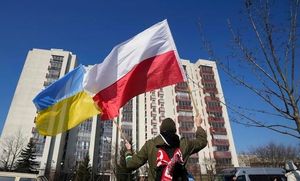On September 6, 2025, the heart of Washington, D.C. became the epicenter of a powerful and determined protest as tens of thousands of demonstrators marched down 16th Street toward the White House. The “We Are All D.C.” march, as it was called, marked the city’s first major organized protest since President Donald Trump declared a state of emergency and ordered federal troops onto the city’s streets. The demonstration was not only a response to the federal occupation of the capital but also a rallying cry against what many participants and organizers saw as an assault on local autonomy and civil liberties.
The event was spearheaded by a broad coalition of organizations, including Free DC, Democracy Forward, and the American Civil Liberties Union (ACLU), alongside defenders of local self-rule and a host of labor unions. The march began at Meridian Hill Park around 11 a.m., with participants carrying banners that read “END THE D.C. OCCUPATION” in both English and Spanish. The crowd surged for over two miles, ultimately gathering at Freedom Plaza near the White House, united in their demand for an immediate withdrawal of federal troops and an end to the federalization of the local police department.
According to Democracy Forward, the coalition’s message was unequivocal: “Today, in defense of the people and communities living under a military takeover of DC, we join in sending a clear and peaceful message: the American people will not bow to dictators. We are in solidarity with our neighbors and Black, Brown, immigrant, and other communities targeted. We will march, we will resist, and we will peacefully protest.” The sentiment of unity and resistance was echoed by countless demonstrators who braved the late summer heat to make their voices heard.
The context for the protest is rooted in a series of federal actions that have left many D.C. residents feeling besieged. In August, President Trump deployed the National Guard to the capital, placing the local police under federal control. The stated goal, according to the administration, was to “rescue our nation’s capital from crime, neglect, and chaos,” and to “take our capital back” in the name of law and order. The move followed a similar deployment in Los Angeles earlier in the summer and was accompanied by threats to send federal troops to other Democratic-led cities, including Chicago and New Orleans.
Trump’s rhetoric on social media further inflamed tensions. In a post that parodied the 1979 Vietnam War film “Apocalypse Now,” he wrote, “I love the smell of deportations in the morning,” referencing migrant deportations and warning, “Chicago about to find out why it’s called the Department of WAR.” Such statements, coupled with the visible presence of armed federal agents and National Guard troops, have put Washington on edge and spurred weeks of demonstrations across the city.
Many at the march expressed deep concern about both the immediate impact of the federal intervention and the broader implications for democracy. Mark Fitzpatrick, a former U.S. diplomat and long-time D.C. resident, told the Associated Press, “Federal agents, national guards patrolling our streets, that’s really an affront to the democracy of our city. We don’t have our own senators or members of the House of Representatives, so we’re at the mercy of a dictator like this, a wanna-be dictator.”
Other voices at the protest highlighted the emotional toll of living under what they described as an occupation. Natasha Sakolsky, a resident of nearby Silver Spring, remarked, “I would've never imagined having the National Guard in place in this town terrorizing people.” Nick Shereikis, a D.C. local, described the past month as “just pure chaos.” For many, the sight of military vehicles and troops on familiar streets was a stark reminder of the city’s unique vulnerability due to its lack of full federal representation.
The protest was notable not just for its size but also for its diversity. Local and national organizations, civil rights groups, and labor unions—including UNITE HERE Local 24 from Detroit—joined forces. Alicia Weaver, a union member who traveled overnight to attend, explained, “Nowadays we have to stay together, and we have to stick together. That’s why we drove overnight all the way here. You know, we got this whole thing together in six days.” For many attendees, the march was as much about solidarity as it was about protest.
Speakers at the event underscored the importance of unity in the face of adversity. Jaime Contreras, a military veteran and naturalized citizen, shared, “They brought me here undocumented. I have become a citizen since. I have served in the United States Military, and this just bothers me. What's happening here is not the freedom that I served to protect.” Contreras, like many others, pledged to continue marching until D.C. residents receive the rights and freedoms they deserve.
The march also took place against a backdrop of legal and political challenges. Just two days before the protest, D.C. Attorney General Brian Schwalb filed a lawsuit alleging that National Guard troops were illegally patrolling neighborhoods in the city. Meanwhile, the Army announced that the National Guard’s presence in D.C. would be extended through the end of November, beyond the original 30-day deployment that was set to expire on September 10. The federal takeover of the D.C. police force was also scheduled to end on September 10, unless Congress authorized an extension.
Ironically, crime statistics cited by city officials showed that D.C. was experiencing a 30-year low in crime before the federal crackdown began in August. Violent crime has continued to drop since the enforcement surge, raising questions about the necessity and proportionality of the federal response. Many protesters argued that the intervention was less about public safety and more about exerting political control over a city with limited self-governance.
For some, the events unfolding in Washington feel eerily reminiscent of darker chapters in American history. Jun Lee, a printmaker and local resident, reflected, “This is my home, and I never, ever thought all the stuff that I watched in a history documentary that I’m actually living in person, and this is why this is important for everyone, this is our home, we need to fight, we need to resist.”
As the sun set over the capital on Saturday, one thing was clear: the “We Are All D.C.” movement intends to keep up the pressure. As Jaime Contreras put it, “It's not the first, and it won't be the last. We’re gonna march until we free D.C. and we also give the people of D.C. the freedom that they deserve.” The city’s streets may quiet for now, but the call for local self-determination and an end to federal occupation continues to echo across Washington and beyond.





